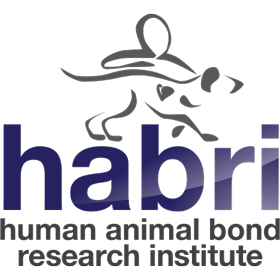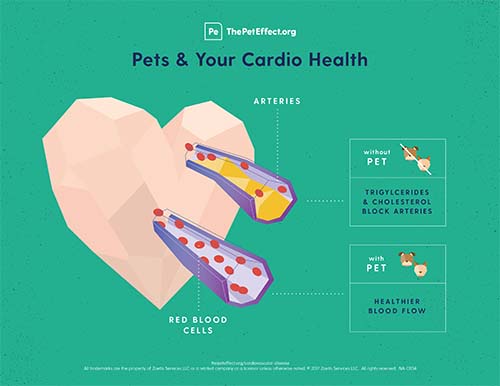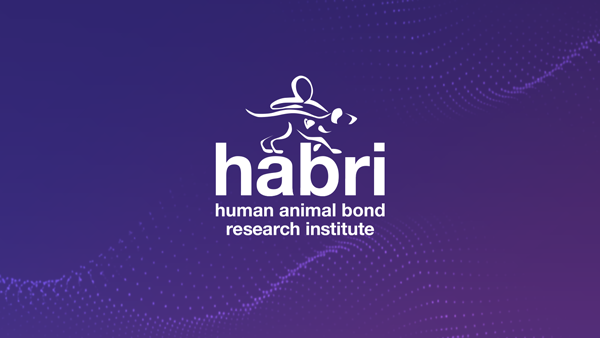April is Autism Awareness Month. Research demonstrates that the human-animal bond can confer many health benefits for children on the autism spectrum, and for their families too! Whether it is a trained service dog or a guinea pig, there is scientific evidence supporting the positive influence of human-animal interaction (HAI) on children with autism spectrum disorder (ASD). More HABRI-funded research is underway, but here is a rundown of some of the things we know so far:
Addressing Loneliness
One of the most common characteristics of children on the autism spectrum is difficulty socializing with others and forming connections, and as a result, many children with ASD face social isolation and loneliness. Research suggests that a connection with a companion animal can both reduce loneliness and provide needed companionship in children with autism.[1] When researchers survey children who have strong human-animal bonds, the fundamentally nonjudgmental nature of pets and their unconditional love are often cited reasons for this meaningful companionship.
Improving Social Behavior
Pets can facilitate new social connections in children with ASD, as pets can often reduce barriers to initiating new conversations and social interactions.[2] In educational settings, pets have also been found to increase socialization in children with autism, leading to more engagement in the classroom.[3]
Animal-assisted therapy (AAT) has also been found to increase socialization in children with ASD. Researchers speculate that the readiness for many animals to react affectionately to attention make them uniquely suitable to be ‘emotional bridges’ in therapeutic contexts.[4] One study found that, following the introduction of a therapy dog into a therapeutic session, seriously withdrawn children with ASD showed a sharp increase in both verbal and nonverbal communication, directed both at the therapy dog and the therapist.[5] Furthermore, a HABRI-funded study that incorporated therapy dogs in a social skills intervention for children with high functioning autism found that children who interacted with a therapy dog showed decreased feelings of isolation and overall depressive symptoms, in addition to increased socialization.[6]
Dogs aren’t the only type of animal that can bring benefits to those with autism. A study examining interactions between children with autism and guinea pigs found that the presence of the guinea pig increased the frequency of social contacts with acquaintances, and the children exhibited some aspects of social behavior that they did not exhibit in the absence of the therapeutic animal. Researchers concluded that the benefit of ‘guinea pig therapists’ lies not only in their small size, but also in a docile disposition and their ability to be a stable member of the child’s family.[7] Additionally, equine-assisted therapy has been found to reduce hyperactivity and irritability in children with an ASD, in addition to increasing social and communication skills.[8]
Improving Family Functioning and Reducing Stress
Companion animals in the home have also been shown to aid families of children with autism. A HABRI-funded study that investigated the impact of a pet dog on families with a child with autism found that families showed significant reductions in family difficulties and in parental stress over the long-term. The results illustrate that dog ownership is associated with enduring improvements to family functioning and may also help alleviate domains of parenting stress associated with parent-child dysfunctional interactions.
Service dogs trained to assist children with autism can also benefit families in a variety of ways. One study examining the physiological impact of service dogs on children with autism found that cortisol levels, used to measure stress, were lower in the children while the service dog was present, and rose when the service dog was removed from the household.[9] In a separate study examining the effect of integrating service dogs into ten families with an autistic child, family members reported improved safety, motor function, calmness, and compliance with parents’ directives after the introduction of the service dog.[10] HABRI is currently funding a research project being conducted by researchers at Purdue University that is evaluating the impact of a service dog on children with autism and their families.
Another active HABRI-funded study from the University of Missouri is examining the impact of shelter cat adoption in families of children with autism. The researchers hypothesize that children with ASD will exhibit increased social skills after the introduction of a shelter cat, and that the quieter, calmer demeanor of a cat may make them a suitable pet for these families. Cat stress is also being investigated, and it is expected that cats will adjust to their new homes without significant stress.
If you are interested in learning more about the science behind the benefits of the human-animal bond for autism, please visit www.habri.org/research/child-health/autism/. Additionally, many of HABRI’s supporters and partners feature useful resources relating to autism and the human-animal bond.
- HABRI Central: Autism Spectrum Disorder
- HABRI Central, HABRI’s online database of human-animal interaction resources, features key-word searchable resources on autism spectrum disorder.
- The Pet Effect: A little help for kids with autism
- Led by Zoetis, the Pet Effect campaign introduces pet owners to the health benefits of the human-animal bond.
- How Pets Can Transform the Lives of Children with Autism
- In this blog post, Purina discusses the various ways pets can benefit children with autism.
HABRI is proud to support research into the health benefits of the human-animal bond for children with autism. It is our hope that in sharing science and information about the benefits of pets for autism during National Autism Awareness Month, more children and their families will benefit from the healing power of the human-animal bond.
References
5.





